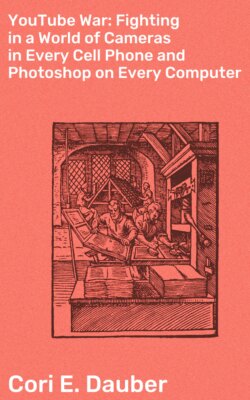Читать книгу YouTube War: Fighting in a World of Cameras in Every Cell Phone and Photoshop on Every Computer - Cori E. Dauber - Страница 7
Introduction
ОглавлениеVirtually since the day the Global War on Terror (GWOT) began, it has been widely understood to be an information war. But there has been too little analysis of what exactly that means, how precisely an information war (fought during an information age) might differ from other, earlier forms of war, and in particular what role technology might play in shaping such a war. There is, of course, a vast literature on the potential for new technologies to create a Revolution in Military Affairs or networked warfare, but that discusses the impact of military technology on the way the force can be used in military operations. The question here is what the impact of new communication and information technologies in the hands of civilian forces—some of whom are combatants—will be on the environment in which the force will be used. This monograph argues that the impact of these new technologies has been, and will be, enormous; certainly great enough that the way they are shaping the battlefield needs to be understood.
The argument first examines the nature of this new information environment as it pertains to fighting war, then considers the power of the visual image generally, and in the context of the Iraqi innovation in terms of the way propaganda is structured and utilized.
Next evaluated is the role and importance of media representations of dead bodies, the role they play in both propaganda and news coverage, in particular distinctions made by news outlets between bodies shown covered and bodies shown exposed. Other types of videos—in particular those having to do with hostage situations—are then examined, and finally the author draws conclusions and offers recommendations for dealing more effectively and proactively with enemy propaganda visuals.
Waging war against terrorists (or insurgents using a terrorist playbook) is a qualitatively different enterprise from earlier, or different, wars. By definition, terrorists are too weak to fight conventional battles. The question is what kind of battle, then, are they fighting? They fight a battle to shape the perceptions and attitudes of the public—a battle over the public’s very will to continue fighting, whether that is the indigenous public insurgents seek to intimidate or the domestic American public they seek to influence so as to force counterinsurgents to withdraw from the battlefield prematurely. And in the modern world, this will, of necessity, be a battle to shape media coverage. Terrorist attacks today ought to be understood as consciously crafted media events, and while that has arguably always been the case to some degree, today that is more true than ever before in two senses. First, the terrorist attack is itself very often designed and intended for the cameras. Terrorist attacks are for an audience or else they have no meaning. Their true target, in other words, is not actually that which is blown up or destroyed—that item, or those people—for that is merely a stage prop. What is really being targeted is those who are watching at home. The goal after all, is to have a psychological effect of some sort (to terrorize) and it is not possible to have such an effect on those who are already dead.
It is for that reason that the military force fighting today against a terrorist organization in defense of a democratic state is really fighting a two-front war. There is on the one hand the ground war, meaning the war that has to actually be won on the ground, the state of play on the ground as it exists in reality. But there is also the air war, meaning the war as it exists on the nation’s front pages and television screens. For a democracy, winning one and not the other will always mean losing, and losing in a very real sense, because the loss of public support means that the war will come to an end, period.
This means that the terrorist attack is a media event in the sense that it is designed to attract the attention of the media, to gain the media’s attention, the same way that a political campaign event is a media event, designed to attract the media’s attention and thus garner coverage. As in the case of the presidential campaign, when we discuss media attention we are really first and foremost talking about television. When we are talking about gaining television’s attention, we are really talking about gaining the attention of the cameras—and the way to do that, of course, is to provide good visuals, however those are defined in a particular context.
